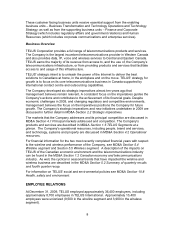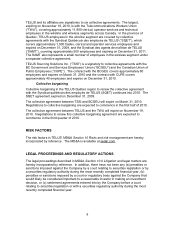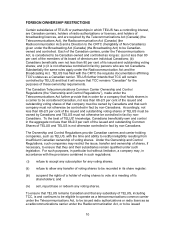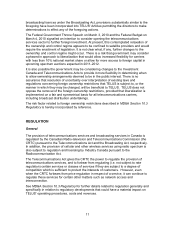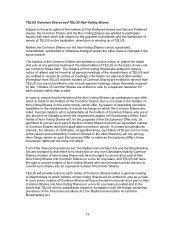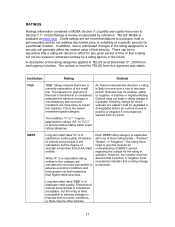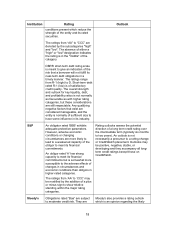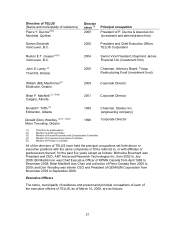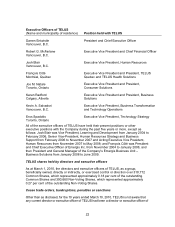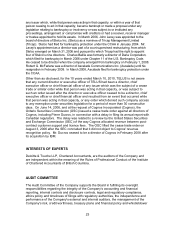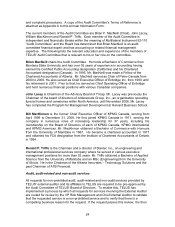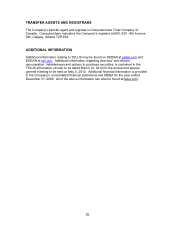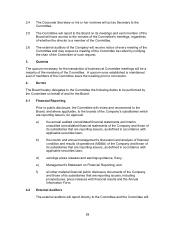Telus 2009 Annual Report Download - page 18
Download and view the complete annual report
Please find page 18 of the 2009 Telus annual report below. You can navigate through the pages in the report by either clicking on the pages listed below, or by using the keyword search tool below to find specific information within the annual report.
Institution Rating Outlook
conditions present which reduce the
strength of the entity and its rated
securities.
The ratings from “AA” to “CCC” are
denoted by the subcategories "high"
and "low". The absence of either a
"high" or "low" designation indicates
the rating is in the "middle" of the
category.
DBRS’ short-term debt rating scale
is meant to give an indication of the
risk that a borrower will not fulfill its
near-term debt obligations in a
timely manner. The ratings range
from R-1 (high) to D. Short-term debt
rated R-1 (low) is of satisfactory
credit quality. The overall strength
and outlook for key liquidity, debt,
and profitability ratios is not normally
as favourable as with higher rating
categories, but these considerations
are still respectable. Any qualifying
negative factors that exist are
considered manageable, and the
entity is normally of sufficient size to
have some influence in its industry.
S&P An obligator rated ‘BBB’ exhibits
adequate protection parameters.
However, adverse economic
conditions or changing
circumstances are more likely to
lead to a weakened capacity of the
obligor to meet its financial
commitments.
An obligor rated 'A' has strong
capacity to meet its financial
commitments but is somewhat more
susceptible to the adverse effects of
changes in circumstances and
economic conditions than obligors in
higher-rated categories.
The ratings from ‘AA’ to ‘CCC’ may
be modified by the addition of a plus
or minus sign to show relative
standing within the major rating
categories.
Rating outlooks assess the potential
direction of a long term credit rating over
the intermediate term (typically six months
to two years). An outlook is not
necessarily a precursor to a rating change
or CreditWatch placement. Outlooks may
be positive, negative, stable, or
developing and they accompany all long-
term credit ratings except those on
CreditWatch.
Moody’s Obligations rated “Baa” are subject
to moderate credit risk. They are
Moody's also provides a rating outlook
which is an opinion regarding the likely
18


